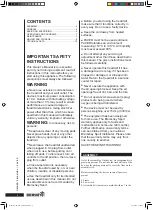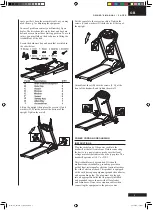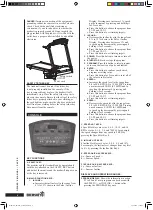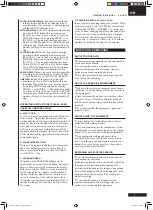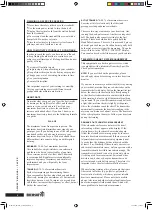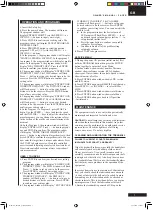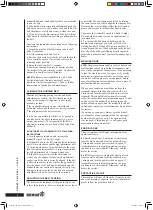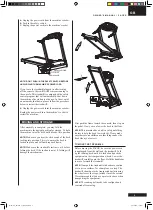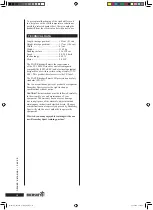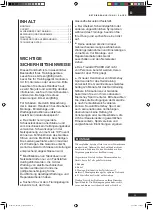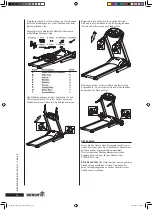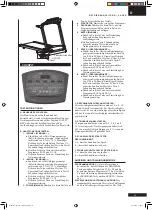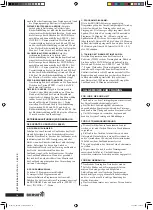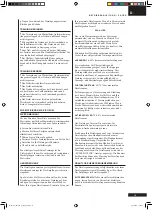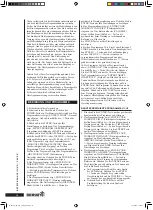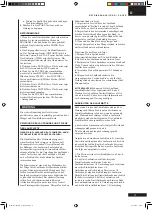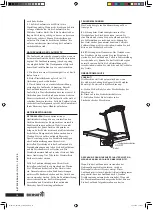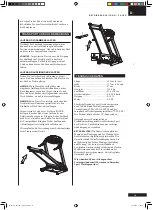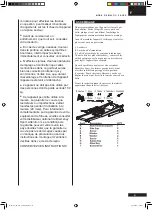
6
2:1(560$18$/
3
$&(5
FINISHING AN EXERCISE SESSION
Never leave the safety tether key in the treadmill.
Use the main power switch to turn the unit off.
Unplug the electrical cord from the wall outlet and
from the treadmill.
If necessary clean the treadmill from sweat with a
damp cloth. Do not use solvents.
Store the electrical cord where it is clear from all
pathways and out of childrens’ reach.
HOW TO MOTIVATE YOURSELF TO CONTINUE
In order to reach the goals you have set, you’ll need
to keep finding the motivation to continue so you
achieve your ultimate goal: life-long health and a new
quality of living.
Set yourself realistic targets.
Progress step-by-step according to your schedule.
Keep a fitness diary and write down your progress.
Change your way of exercising from time to time.
Use your imagination.
Learn self-discipline.
One important aspect of your training is versatility.
Varying your training exercises different muscle
groups and helps maintain motivation.
HEART RATE
No matter what your goal, you’ll get the best results
by training at the right level of effort, and the best
measure is your own heart rate. First find your
maximum heart rate i.e. where the rate doesn’t
increase with added effort. If you don’t know your
maximum heart rate, please use the following formula
as a guide:
220 - AGE
The maximum varies from person to person. The
maximum heart rate diminishes on average by one
point per year. If you belong to one of the risk groups
mentioned earlier, ask a doctor to measure your
maximum heart rate for you. We have defined three
different heart-rate zones to help you with targeted
training.
BEGINNER:
50-60 % of maximum heart rate
Also suitable for weight-watchers, convalescents
and those who haven’t exercised for a long time.
Three sessions a week of at least a half-hour each
is recommended. Regular exercise considerably
improves beginners’ respiratory and circulatory
performance and you will quickly feel your
improvement.
TRAINER:
60-70 % of maximum heart rate
Perfect for improving and maintaining fitness.
Even reasonable effort develops the heart and lungs
effectively, training for a minimum of 30 minutes at
least three times a week. To improve your condition
still further, increase either frequency or effort, but not
both at the same time!
ACTIVE TRAINER:
70-80 % of maximum heart rate
Exercise at this level suits only the fittest and
presupposes long-endurance workouts.
There are two ways to measure your heart rate. One
is using the hand-pulse sensor. Another is using chest
belt. The hand-pulse sensor is setting for the first
priority. Please use both hands to gently hold the
Hand Pulse Sensors. There are 2 sensors and 2 pieces
of metal part each sensor. Each hand must gently hold
both metal pieces to trigger the measuring. The pulse
rate will show in the “PULSE / INCLINE” Display.
You can also use chest belt to measure your heart rate.
TELEMETRIC HEART RATE MEASUREMENT
This equipment has a built in pulse receiver, which
is compatible with a telemetric Bremshey Sport Pro
Check pulse transmitter.
NOTE!
If you are fitted with a pacemaker, please
consult a physician before using a wireless heart rate
monitor.
If you want to measure your heart rate this way during
your workout, moisten the grooved electrodes on the
transmitter belt with water. Fasten the transmitter just
below the chest with the elastic belt, firmly enough
so that the electrodes remain in contact with the skin
while training, but not so tight that normal breathing
is prevented. If you wear the transmitter and belt over
a light shirt, moisten the shirt slightly at the points
where the electrodes touch the shirt. The transmitter
automatically transmits the heart-rate reading to the
meter up to a distance of about 1 meter. The heart-rate
value is displayed in the meter. Follow your heart rate
during the training.
REMARKS ON TELEMETRIC MEASUREMENT
If the electrode surfaces are not moist, the heart
rate reading will not appear on the display. If the
electrodes are dry, they must be moistened again.
Allow the electrodes to warm up properly to ensure
accurate heart-rate measurement. If there are several
telemetric heart rate measurement equipments next
to each other, the distance between them should be
at least 1,5 m. Similarly, if there is only one receiver
and several transmitters in use, only one person with a
transmitter should be within transmission range. The
transmitter is switched to an active state only when
it is being used for measurement. Sweat and other
moisture can, however, keep the transmitter in an
active state and waste battery energy. Therefore it is
important to dry the electrodes carefully after use.
When selecting training attire, please note that some
fibers used in clothes (e.g. polyester, polyamide)
create static electricity, which may prevent reliable
heart rate measurement. Please note that a mobile
phone, television and other electrical appliances form
an electro-magnetic field around them, which will
cause problems in heart rate measurement.
Bremshey_Pacer09_4_spareparts.indd 6
22.5.2008 12:07:46


